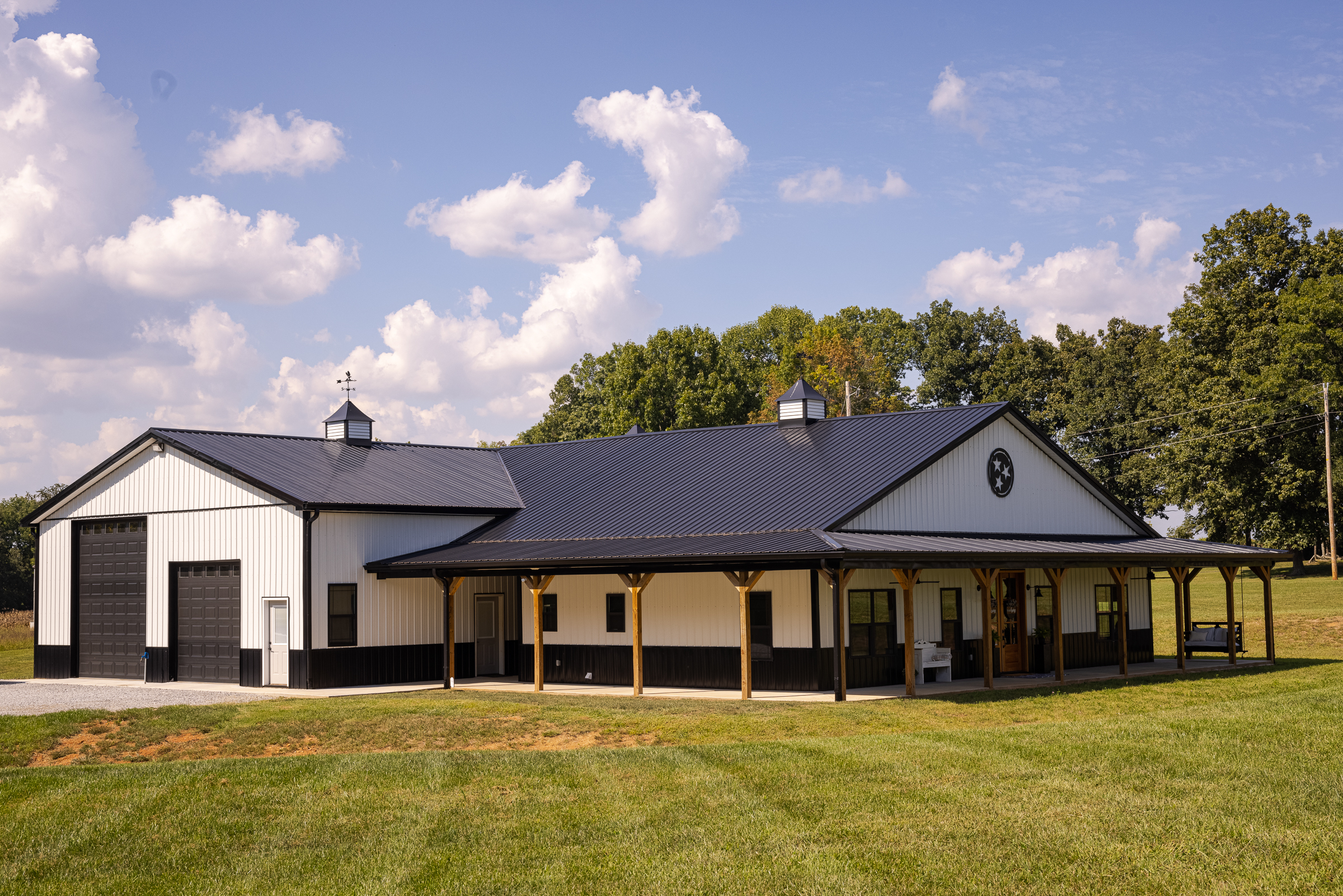Barndominiums Vs. Conventional Homes: a Detailed Contrast of Way Of Life and Capability
The choice in between barndominiums and traditional homes incorporates various aspects, consisting of lifestyle preferences and functional demands. Barndominiums are characterized by their open layouts and flexibility, commonly appealing to those that focus on communal living and flexibility.
Review of Barndominiums
Barndominiums, a novel real estate trend obtaining popularity throughout numerous areas, mix the rustic appeal of barn-style architecture with the capability of modern home. These one-of-a-kind structures usually consist of a metal or wood framework, integrating open floor plans and high ceilings with energy-efficient functions. Frequently situated on large rural properties, barndominiums use house owners the possibility to take pleasure in a tranquil lifestyle while giving ample area for different activities.
The adaptability of barndominiums prolongs beyond their aesthetic appeal; they can function as both living quarters and useful spaces for leisure activities, workshops, or even small companies. Their adaptive style allows for easy personalization, suiting diverse household needs and choices. Numerous owners value the low maintenance requirements related to steel home siding and roof covering, adding to long-term durability.

Characteristics of Typical Residences
Emphasizing ageless layout and comfort, standard homes are identified by their distinct building designs, which typically mirror historical influences and regional visual appeals. Usual functions include in proportion facades, gabled roofings, and an emphasis on craftsmanship, resulting in a warm and inviting ambience.
Traditional homes frequently incorporate aspects such as crown molding, wainscoting, and hardwood floor covering, improving their timeless appeal. They generally include several spaces with specified functions, promoting family members interaction while enabling privacy. visit site. The format typically includes official living and eating locations, which contribute to entertaining guests and organizing household gatherings
Exterior materials such as block, timber, or stone are often utilized, adding to resilience and a sense of durability. Barndominium builder. In addition, many conventional homes are created with front verandas or stoops, cultivating a feeling of community and link with the neighborhood
Landscape design plays a considerable role in standard home design, with well-kept yards and pathways that improve curb appeal - see website. In general, traditional homes personify a feeling of nostalgia and stability, attracting those who value heritage and an extra organized living setting
Price Comparison
Generally, a cost comparison between barndominiums and traditional homes discloses considerable differences in building expenditures and general investment. Barndominiums, frequently created from steel or steel frameworks, typically sustain lower product and labor costs than typical homes developed from wood and brick. The streamlined style of barndominiums can equate to minimized building and construction times, better lowering labor costs and accelerating occupancy.
Usually, the expense per square foot for a barndominium ranges from $100 to $150, while traditional homes can differ extensively, typically dropping between $150 and $300 per square foot, depending upon area, products, and layout intricacy. This price difference makes barndominiums an attractive alternative for budget-conscious purchasers looking for bigger home without sacrificing top quality.
Additionally, barndominiums may result in lasting savings with reduced upkeep see website prices, energy performance, and insurance prices. Their resilient building and construction products usually call for much less maintenance gradually compared to standard homes. Nonetheless, it is vital to take into consideration that while preliminary costs may be lower for barndominiums, the final financial investment will also rely on specific customization and wanted services, which can affect the total expense in both housing types.
Way Of Life and Area Factors To Consider
When thinking about lifestyle and room, barndominiums supply a special versatility that interest a selection of homeowners. These hybrid structures integrate residential living with practical area, often including open layout that can be adjusted to match individual demands. This adaptability is specifically useful for families or individuals looking for a customized living setting, enabling varied uses such as home offices, workshops, or recreational locations.

Additionally, the visual allure of barndominiums can provide to both rustic and contemporary tastes, making them a flexible option for numerous design choices (Barndominium repair). Eventually, the choice in between a barndominium and a traditional home commonly pivots on just how well each choice aligns with the home owner's way of living aspirations and spatial demands, highlighting the importance of thinking about individual priorities in the decision-making process
Environmental Impact and Sustainability
The ecological impact and sustainability of barndominiums existing compelling advantages contrasted to typical homes. Primarily built from steel and other resilient materials, barndominiums are typically built utilizing recycled sources, minimizing the demand for brand-new products and minimizing waste. Their design generally emphasizes open rooms, which can lead to lower power consumption for heating and air conditioning contrasted to typical homes with even more fractional designs.
In addition, barndominiums can incorporate lasting functions such as photovoltaic panels, rainwater harvesting systems, and progressed insulation techniques, improving their power efficiency. The adaptability of their style enables property owners to incorporate these innovations much more seamlessly than in lots of typical homes, which might call for comprehensive retrofitting.
Furthermore, barndominiums frequently need less sources for building and construction as a result of their simpler, more effective layouts. This not only decreases the carbon footprint associated with structure however likewise adds to a much more sustainable way of living. In comparison, conventional homes may include greater levels of energy expenditure and resource make use of throughout their lifecycle, from building to upkeep. In general, barndominiums stand for a forward-thinking strategy to lasting living, straightening with modern environmental concerns.
Final Thought
In summary, the choice between barndominiums and typical homes hinges on specific way of life preferences and useful demands. Barndominiums, with their open formats and sustainable materials, cater to those seeking adaptability and communal living.